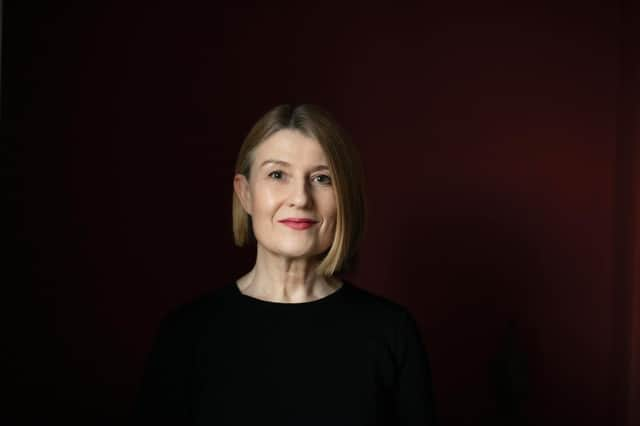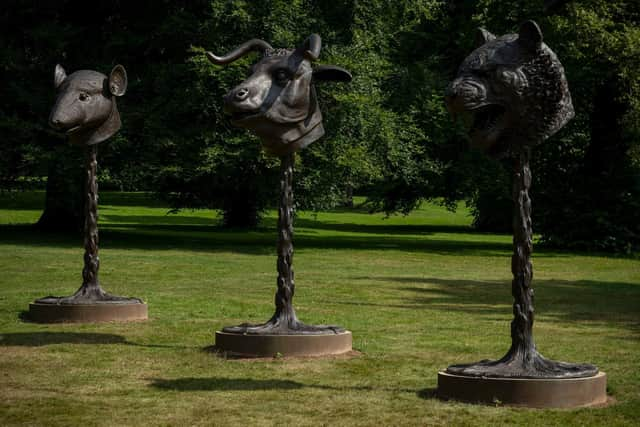The new director of the Yorkshire Sculpture Park shares her thoughts on taking the organisation forward


Three months into her new role as director of the Yorkshire Sculpture Park, Clare Lilley is in a positive frame of mind.
“Well, it’s been very busy but I’m really happy with the way things are panning out so far,” she says. “I’ve been able to make some promotions in the curatorial team which is brilliant and I have been having lots of conversations with staff in all departments – I want everyone to feel valued and heard, that is an ongoing process and we have already made progress. I have also spoken with the trustees and I’m getting a better understanding of the whole organisation.”
Advertisement
Hide AdAdvertisement
Hide AdLilley, who took over from founding director Peter Murray on his retirement at the end of March, is, of course, very familiar with the YSP having worked there for 30 years.


Her appointment as director follows a hugely successful period as the organisation’s director of programme, heading up the curatorial team and overseeing many of the world-class exhibitions that it has put on in recent years showcasing the work of internationally acclaimed artists such as Ai Weiwei, Fiona Banner, Damien Hirst, Amar Kanwar, KAWS, Kimsooja, Alfredo Jaar, Shirin Neshat, Giuseppe Penone, Sean Scully, Yinka Shonibare, Joana Vasconcelos and Bill Viola. During that time she was also responsible for the YSP collection and lead on learning and engagement.
In the first instance, as director Lilley intends to take stock of the institution’s enormous achievements in the decades since it was founded by Murray in 1977, look at where it is now as a globally-renowned cultural force and consider where it goes next.
“I’m keen on reviewing what works and what doesn’t work and developing what needs to be developed,” she says. “I envisage this year and next I will be doing a lot of reviewing on a number of fronts. That was always my plan – to think strategically about the future.”
Advertisement
Hide AdAdvertisement
Hide AdHer love for the YSP, she says, “knows no bounds” and her aspirations for it “are of the highest order”. While she acknowledges that she has to be “cautious about what the future holds”, the past two and a half years, although challenging, have proved that the organisation is resilient. Thanks to its predominantly outdoor offer, YSP was one of the first visual arts organisations that was able to welcome back visitors as restrictions began to be eased during the Covid-19 pandemic.
“One enormous change that came out of that is that we are now a ticketed organisation,” says Lilley. “That was a really big move. We had to do it because of government legislation during the lockdown period – it enabled us to keep track of and limit our visitor numbers – but we are retaining it as it works well for us and the feedback we have had is that our visitors prefer it. One of the really lovely things is that as a result people are spending longer here and exploring further. Even people who have been coming here for many years have discovered new areas of the Park.”
Management of the Park’s 500-acre site, both its landscape and buildings on the 18th century Bretton Hall estate, is a priority for Lilley going forward. “The big challenge for us, and high on my agenda, is that because Arts Council support is the foundation stone of our funding, that means investment has gone into the exhibition programme and education, but what we haven’t been able to invest as much in is the landscape and infrastructure. There are buildings here that are 250-plus years old and even our new buildings are now over 20 years old. So this is the time for restoration.”
In terms of the natural environment, there has been a tree-planting programme over the past ten years which Lilley intends to continue and expand upon. “There is always more to do. We are thinking about sustainable gardening and estate management and biodiversity, so we have been letting the grass grow longer, leaving the perimeter of the lawns for wild grasses and wildflowers which means we have slightly less space for siting sculpture but we are supporting the bee and butterfly population.”
Advertisement
Hide AdAdvertisement
Hide AdLilley will still be involved with the curation of exhibitions – she is curating the next three shows – and the expertise she has built up over the past three decades is invaluable. “One of the things I have most enjoyed over the past several years is siting sculpture, it is so exciting. It is challenging too – I love working with the technical team on that. I come from a family of engineers so I love the engineering aspect of it.”
Most of all Lilley is committed to attracting a wider, more diverse audience through programming that has a far-reaching appeal. “Our current Robert Indiana exhibition has been a springboard for our Summer of Love programme and that’s a way of reaching out to people who maybe haven’t been here before,” she says.
“We have been creating events and programming that’s all about the love of humanity and caring for each other, which I think is particularly important at this time. I want YSP to be embraced and enjoyed by more people but at the same time I want to retain the intimacy of the place – there is this sense of it being a kind of sanctuary, so we have to get the balance right.”
She says she also wants to ensure that their exhibitions and events are meaningful and relevant to people’s lives. “So for example the Jaume Plensa project at the moment talks about the Universal Declaration of Human Rights which seems very important right now. The beauty of the position that we are in is that we can deal with pressing global issues but in a way that’s not hammering you over the head. It’s an elliptical way in. For me it’s so important that people feel joy and pleasure and experience beauty. The driver in my entire career has been to contribute to the quality of life of the whole region.”
Advertisement
Hide AdAdvertisement
Hide AdAnd her commitment to building on that sense of purpose is clear. “In terms of a vision, what I really want is for the Yorkshire Sculpture Park to be recognised as the leading place in the world for art, nature and learning. YSP came out of an ethos that’s very deeply rooted in creative learning, inspired by Sir Alec Clegg’s idea of education for the mind and spirit. I feel that is more important than ever. I want YSP to be a creative hub with access to making and creating and walking and talking and listening and seeing. We already offer lots of ways for people to get involved creatively but there could be more.”
Lilley’s deep-rooted personal connection to the Sculpture Park is obvious and genuine. “I feel as though the soil is in my blood,” she says. “Over the years I have had some pretty brilliant opportunities to work in other places but when it came to it, I just couldn’t tear myself away. There are lots of reasons why people stay here for a long time but the land is a big part of it. It is a very special place. Even though I know it inside out, there is always something new to discover. I love that. There really is nowhere else like it.”
The Yorkshire Sculpture Park is open seven days a week, year-round. ysp.org.u